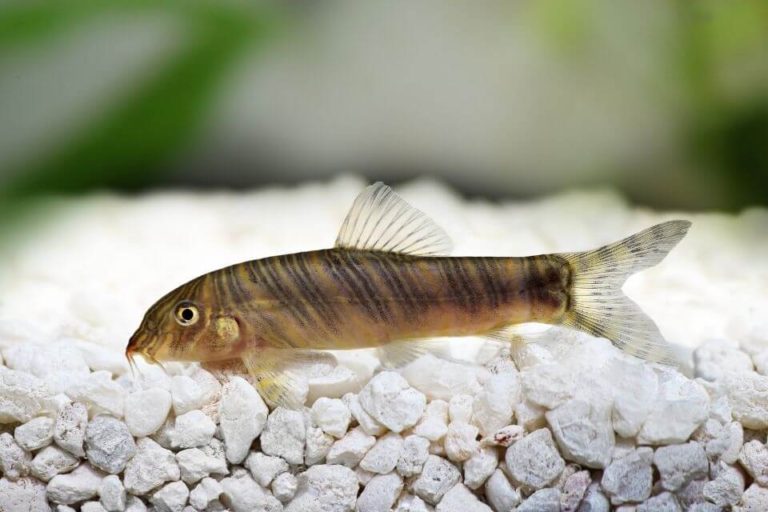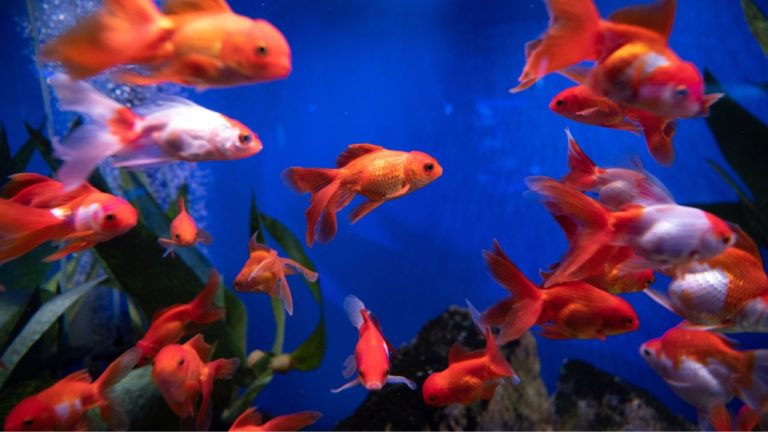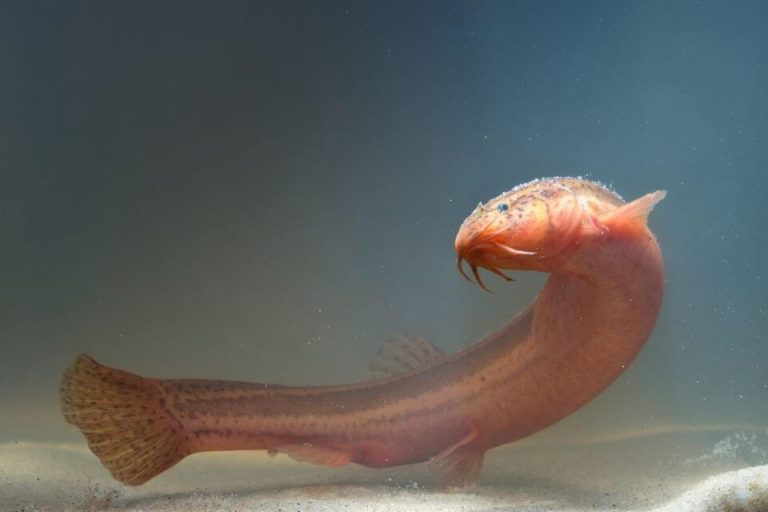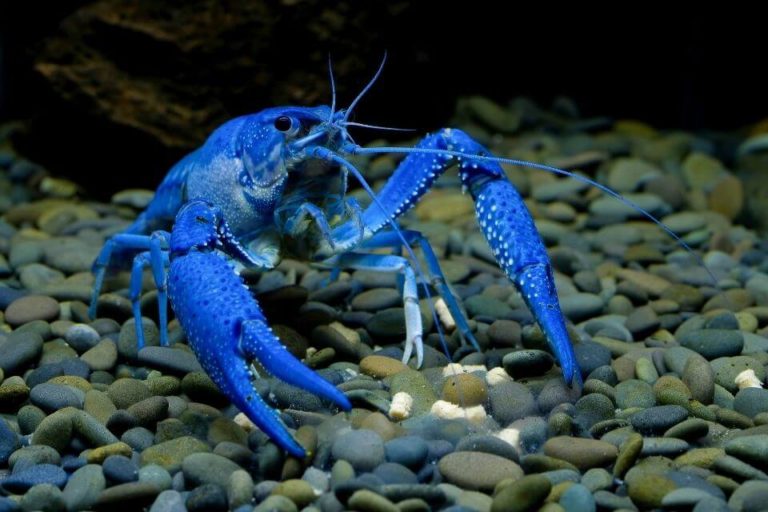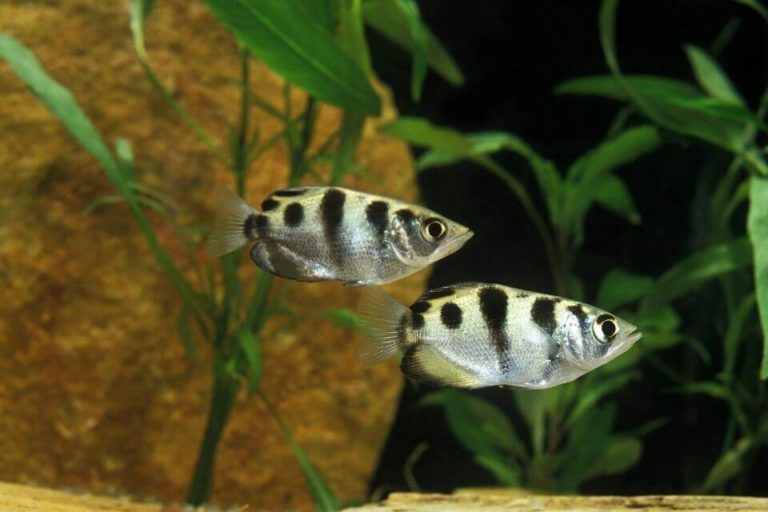Least Killifish Care Guide: Tank Mates, Food, Breeding and Care Tips

Least Killifish is the most stunning Killifish breed that we keep in our home aquariums. It is one of the easiest to care about among the 1300 species of Killifish breeds discovered so far worldwide.
They have different characteristics that uniquely distinguish them individually from each other. Only a few of them we keep in our home aquariums such as Least Killifish.
Therefore, before keeping one of these species, it is advisable to seek professional advice. This will allow you to decide on which species would match your preference, easy to care for, and maintain according to your time and financial capability.
Since you have not bumped onto this article, mistakenly consider yourself lucky. Because you have found the right place to get the best information to guide you on how to care and maintain the Least Killifish successfully.
| Quick Facts: | |
|---|---|
| Common Names | : Least Killifish, Lesser Killifish, Dwarf Topminnow, Midget Livebearer |
| Origin | : Water bodies of North America |
| Family | : Poeciliidae |
| Scientific Name | : Heterandria formosa |
| Care Level | : Easy |
| Temperament | : Peaceful |
| Social | : Schooling fish |
| Diet | : Omnivores |
| Size (average) | : 0.8 - 1.4 inches |
| Lifespan | : Up to 5 years |
| Breeding | : Livebearer |
| Minimum Tank Size | : 5 gallons |
| Tank Environment | : Freshwater, Sandy substrate, Rocks, Driftwood, Live aquarium plants |
| Temperature | : 68 – 80 °F (20 – 27 °C) |
| Water Hardness | : 5 - 20 dKH |
| Water pH Level | : 6.5 - 8.0 |
Overview of Least Killifish
The Least Killifish is well known by many names as Lesser Killifish, Dwarf Topminnow, Midget Livebearer and are considered not a true killifish, meaning they are vastly underrated fish.
Besides, they are also known to be very shy, peaceful, and not picky due to their easy adaptability to any water condition. They eat anything you throw at them, making them easy to care for an aquarium pet.
However, Least Killifish is scientifically known as Heterandria formosa. They belong in the family Poeciliidae, the same family as Guppies and Mollies. Poeciliidae is livebearer fish; therefore, the Least killifish are the smallest livebearers fish and the 7th smallest fish worldwide.
Every male in the least Killifish’s genus possesses a clear sexual dimorphism and is “finely formed,” hence the name “Heterandria Formosa.”
Origin, Distribution, and Availability
Least Killifish is most often found in water bodies in Alabama, South Carolina, Georgia, Florida, and Louisiana in the United States. The natural habitat that you will likely find the most is the marginal area of still and shallow waters or sluggish water bodies heavily vegetated.
Further, you may also find them in areas with brackish water conditions. Mostly in the above-mentioned places, the water temperature that is ranging from 50 to 89 degrees Fahrenheit (10 to 32 degrees Celsius), and they also survive different wild conditions.
They feed on plant materials, water fleas, mosquito larvae, worms, and microcrustaceans in their natural tropical habitat. Further, they can survive feeding on water fleas only.
Least Killifish Typical Behavior
Least Killifish is the peaceful and friendliest fish species among the rest, making them the best tank mate. But be very careful with large fish that are predators and small, long shrimps.
Besides, they quit shy fish; hence, they will shy away from other tankmates and new fish when you introduce them into the aquarium.
However, with time they will start to get along very well with friendlier tank mates, and it is rare to experience any trouble from them and are harmless to fries. Trouble only shoots when males compete for females during breeding because they tend to be aggressive but rare physical damage.
Still, you can easily solve that by ensuring you keep males in a lower number ratio to females.
Due to their shy behavior, you will find most of the time they hide in safer spots such as vegetation and underneath the rock. They like swimming at the top level of the tank to feed on mosquito larvae.
Thus, their aquarium setup should be well plaited with vegetation. You should avoid leaving the aquarium lid open, or else you may found them dead on the floor.
They love being in a small colony, swim together in the same direction indicating their schooling behavior, and when they feel comfortable and peaceful, you will find most of the time in the open water.
Characteristics of Least Killifish
As we mentioned earlier, there are 1300 Killifish breeds but not all the Killifish breeds that we can keep as aquariums pets. Let us take a close look at the primary characteristics of Least Killifish that we discuss in this article.
Appearance, Colors, and Special Markings

The physical characteristics of the Least Killifish are what makes them very unique from their family. As mentioned before, they are the smallest livebearer fish species, but you can easily distinguish them physically because of their olive skin and horizontal stripe running through the center of their body.
The Least Killifish is a very small fish species, making them easy prey for larger fish; hence, you are discouraged from mixing them in your tank with larger species. In case you have one, please, it’s appropriate to consider keeping them in separate tanks.
Size: How Big Do Least Killifish Get?
The adult female Least Killifish grows up to 1.4 inches in size, making them larger than their counterpart males, who maximally reach 0.8 inches. Therefore you can easily distinguish males from females in their school or the aquarium.
Still, there are far more differences between them in their physical characteristics that we will check on how significant and unique it is to breeding.
Least Killifish Lifespan
The Least Killifish can live up to 5 years if well taken care of. But it may not live up to 5 years if the tank condition and lifestyle do not adhere to its natural habitat. Therefore, you should be very keen and caring while ensuring the aquatic condition, and you feed them well-balanced and quality food.
Adhering to the aquarium conditions and feeding standards will keep them happy and comfortable will boost their immunity and health and keep them free from diseases.
Further, a male from sibling generation exhibit inbreeding depression, leading to a reduction in reproduction vigor in males. Hence, you need to extra cautious when breeding them to avoid inbreeding depression to improve their vigor and lifespan.
Aquarium Care and Conditions for Least Killifish
When it comes to aquarium care and conditions, you must follow the instruction that we discussed below. That will help you to give your Least Killifish the best living environment.
Tank Conditions and Care
From their geographical setup and adaptability to different wild water conditions where they originated, Least Killifish are hardy species that naturally balance, which they find tolerable for survival.
However, the tank setup is totally different from their natural habitat and ecology; hence, you should provide comfortable and favorable surroundings that simulate their water conditions.
Further, adhering strictly to the hygienic and tropical conditions, which is their best water condition, will boost their comfort and enhance breeding and lifespan.
The Least Killifish like swimming in still and slow-moving water. Hence the need to filtrate the water gently for the minimal flow of water to avoid the fry from being sucked into the box filters.
However, it is advisable to use a sponge filter that is efficient in setting low airflow. That will minimize the risks of fry being sucked and eliminating toxins in the water.
Since the Least Killifish are very jumpy and are even capable of escaping through small spaces, you should ensure you tightly secure the lid to prevent them from jumping out, and the lid should not have any holes. Then the water condition should be soft and slightly acidic.
However, if you do not have soft water, hard alkaline water from the tap will also work. You ensure to add De-chlorinator and aquarium salt to prevent their fins from clamping and to maintain the water hygiene.
Tank Size
As stated, they like swimming in shallow waters, and these fish can do well in a tank size with a minimum capacity of 5 gallons. This space is enough 2 specimens. However, they strive and breed well in a larger tank size of about 10 gallons and so long as the tank is well maintained.
Further, a larger tank provides a lot of comfort for them gives you the advantage of keeping more schools. However, the disadvantage of using a large tank is that it may take a lot of time to search for food.
Finally, you should change the water twice a month if your tank is well interiorly decorated, cycled and lightly stocked. Therefore, it means there is a need to do a lot of water change if you have not met the conditions mentioned below.
Tank Setup
Despite providing the right-sized tank and hygienic water, you should provide a surrounding that resembles their natural habitat before introducing them into the tank. The purpose behind mimicking their natural habitat for your aquarium pet is to provide solace, secure, and comfortable surroundings that are interactive and enhance survival.
When setting up a tank for Least Killifish, please provide a low light-setting because they thrive well in subdued lighting settings. But you can easily provide a subdued light setting by using floating plants. Secondly, introduce some dry tree branches.
You may either use Texas holey rock, dragon stones, crushed coral, or limestone to provide a hiding ground/spot or stabilize the water pH levels.
However, it would help if you refrained from using spider wood to increase the pH level. Also, avoid using woods that may carry pathogens and bacterial infection to the water because they increase contracting diseases risks.
Don’t forget to provide them with gravel flooring, substrate sand, or sand from the river, which is a good preying ground for fry. The other reason for decorating the floor with sand and rocks is to provide a hiding ground for fry because adult Least Killifish they like spending their daytime staying at the top.
Water Conditions and Parameters
Meeting the right water conditions should also be a big deal. Because it is their source of body temperature that favors their growth, breeding, and survival.
Hence, it would help if you strictly focused on adhering to the water conditions and parameters to provide a well-balanced environment. Since Least Killifish thrive well in room temperatures of about 68 to 80 degrees Fahrenheit (20 to 27 degrees Celsius) there is no need to heat their water.
Besides water temperature, you should also confirm that the water pH level ranges from within 6.5 to 8.0 with hardness ranging from 5 to 20 dKH.
However, how much they can survive salty water and brackish water condition, you should avoid keeping them in such conditions. Because you may interfere with their growth and health condition as they take time to adapt to the new environment.
Sometimes it may cause diseases slimming their chances of survival.
Suitable Plants
While setting up the tank, you should also provide a green habitat. That will make them stay calm and perceive as their natural vegetation to instill security and provide a natural climate that will favor their growth.
The most suitable and recommendable plant to use is Cryptocorynes because it can grow very fast under a low-light setup. However, the best plant that would work best is Water Wisteria because it is a fast-growing plant.
Also, it is capable of keeping levels of nitrates, nitrites, and ammonia on balance, provides a good shelter, hunting ground for planktons and hiding spots, has anti-microbial properties, and keeps algae at bay. You may also use Bacopa Carolina, Cabomba, Guppy grass, Hornwort, and Java moss,
Diet: What Do Least Killifish Eat?
As mentioned earlier, Least Killifish are not picky eaters. This is contributed by their omnivorous eating characteristic, which makes them look colorful and healthier. Therefore, while feeding them, ensure you balance their diet very well.
They mostly feed on mosquito larvae, bloodworms, small daphnia, brine shrimp eggs, small worms, tubifex worms, freeze-dried worms, Mysis shrimp, wingless fruit-flies, and golden pearl, but their favorite meal is shrimp.
However, they prefer consuming live foods and plants. Their fry prefers eating planktons, newly hatched brine shrimp, and micro-worms which significantly boosts their growth.
They also feed on algae, but it is not considered safe for them since they carry diseases. Further, they can feed on crashed flakes as well. While feeding them, make sure you feed them lightly 3 times a day or moderately twice a day to keep them well sustained.
Least Killifish Diseases
These Least Killifish are relatively hardy. That does not mean they not prone to diseases and other infections if well-fed and live in a favorable condition that is properly balanced. However, that does not guarantee much resistance to parasites, infections, and illness.
Below are some of the diseases you will need to tackle while keeping these lesser livebearers. They include;
Skin and Gill flukes: This is a common and prone disease that may frequently attack these species. It is not easy to notice by naked eyes. However, if you observe keenly, you will notice itchiness and discomfort, excess mucus on their skin, breathing difficulties, and the skin and gill turn red.
This disease is mainly triggered by overcrowding, poor water conditions, which causes stress and other previous infections.
Tapeworm: This is also another parasite infestation that is also rare not to notice. However, you may notice the sunken stomach and stunted growth as the major symptoms and probably are brought by infection from other fish/members.
Columnaris: Columnaris is also known as Cottonmouth disease, which is caused by a gram-negative bacterium that is mostly confused with fungal infections.
When your fish contracts this disease, you are likely to observe the following symptoms; lesions on the back, grey spots, discolored scale, popping off sometimes, and legions on the mouth.
Least Killifish Gender Differences
The sexual dimorphism difference between males and females of the Least Killifish is straightforward to notice. Males are smaller than females with a maximum of up to 0.8 inches and possess enormous intromittent organs for mating.
In contrast, females are large with a maximum length up to 1.4 inches, and their extra spot characterizes their anal fin.
Breeding of Least Killifish
The Least Killifish are livebearers and is one of the simplest and easy to breed species. It would be possible if provide favorable tank conditions and the water parameters are well maintained.
However, since they are egg layers and mating between siblings is discouraged. You should set aside the ones you intend to mate to avoid inbreeding.
Besides, for egg fertilization to take place successfully, you should stock cultivate ratio of male to female 1:3. This will avoid male aggression who tends to be possessive during mating.
When spawning male naturally extends his intromittent organ {gonopodium} to deposit sperm through the female anal fin. This happens a lightning speed; hence you will hardly notice if you are a beginner.
Furthermore, the gestation period lasts for about 28 days, but when giving birth, it is continued for about 10 to 14 days, meaning they reproduce through a process called superfoetation.
Superfoetation is the formation of the second fetus when one is still in the uterus. This will give them the ability to give birth while others develop at different stages.
What makes it unique to give birth continuously is that their egg yolk is nutritionally poor. So the fry gets nourished through her mother’s organs like most mammals. They are also easy to breed because these fish species are harmless to their young ones, thereby allowing them to breed in the same tank.
However, if you have harmful tank mates, please provide a separate tank for breeding to avoid the fry from being prey. You may notice a new young one every day instead of a colony like other fish species during birth.
After the fry is dropped, it freely swims underneath the water to feed on young shrimps and can survive independently. Least Killifish fries eat anything small.
Least Killifish Tank Mates
With their shy and friendly behavior, Least Killifish may take a couple of weeks before becoming familiar with other tankmates. Hence, when they feel not threatened and begin to be familiar with the new surroundings and conditions.
They interact well and spend their time playing together without harming them. However, they interact best when they are in their colony. You should avoid keeping them as a single-species in the aquarium because they can easily get attacked because of its’ size. Therefore, they blend well with tank mates that are not predators like;
- Dwarf corydoras
- Otocinclus
- Aquatic snails
- Pencil fish
- Bluefin Killifish
- Swamp darters
- Ghost shrimp
- Pygmy sunfish
- Emerald dwarf rasboras
- Rosy loach
- Celestial pearl danio
- White clouds
- Scarlet Badis
- Japanese rice fish
Are Least Killifish Schooling Fish?
Yes. Because of their shy and non-aggressive behavior, you will mostly see them playing and swimming together in school.
Are Least Killifish Aggressive?
No. they are friendlier to their school and other tankmates. The only time you may see them getting aggressive is spawning because the male tends to be possessive; hence, you may find them fighting for females.
Therefore, you should ensure you have a proportional balanced number of males to females. You may keep male to female ratio of 1:3 to avoid aggression which may lead to unsuccessful breeding. However, they do not get along with large fish species because they prey on them as their snack.
Are Least Killifish Fin Nippers?
No. Least Killifish live harmoniously and politely in their school. You can not see them nipping fins on each other because they are friendly.
Final Thoughts of Keeping a Least Killifish
These freshwater and almost adaptable to all harsh conditions. These American Native fish species are easy to care for with little demand. That will make the best pet if well treated and provided with all the necessary conditions.
Furthermore, their olive-colored body provides a colorful indoor display that should give you more reasons to keep it as your aquarium pet who deserves all the care and support for their existence in the future.
Keeping the Least Killifish in your freshwater aquarium would be a fun and rewarding experience that you ever can have.


